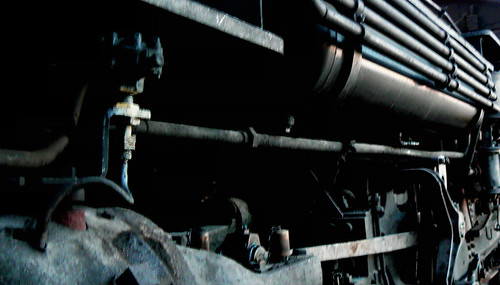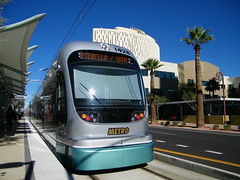B. Thomas Cooper - Editor
 It was an era of steel and steam. It was a time of great power and wealth. Soon the world would be forever changed by this new mechanical marvel, the steam locomotive, the driving force behind the industrial revolution.
It was an era of steel and steam. It was a time of great power and wealth. Soon the world would be forever changed by this new mechanical marvel, the steam locomotive, the driving force behind the industrial revolution.For centuries, man had understood the potential of steam as an energy source, but it took until 1803 before Samuel Homfray was able to successfully harness that energy with his invention of the steam engine. The first successful railway followed soon after, when on March 25th, 1807, England began passenger service between Swansea and Mumbles.
Across the pond, America was developing it’s own railway, and by 1869, eighteen hundred miles of track connected Omaha, Nebraska with Sacramento, California. The resulting improvement of trade routes was felt throughout the world. Within a decade, the industrial revolution was on a roll.
By 1893, the U.S. had completed five transcontinental trunk lines and no less than 260,000 miles of track. Monopolies of all ilk and fancy, now flourished. Vast opportunity awaited the wily entrepreneur. The railroad was no exception.
A brilliant engineer named Theodore Judah successfully persuaded Washington to pony up ten to twenty square miles of land and at least $48,000 for every mile of track completed. The track was laid by armies of imported Chinese ’coolies’, laborers who toiled relentlessly while rail barons were popping champagne corks and charging glasses in celebration.
Enter, Andrew Carnegie, philosopher and opportunist, and in later years, philanthropist. At age 18, Carnegie caught the eye of Pennsylvania rail baron Tom Scott, becoming his personal secretary and telegraph operator. Carnegie however, had great plans for the future. The unbreakable grip of the iron industry was about to give way to steel.

By the turn of the century, William McKinley was president, and in 1903, New York State enacted legislation prohibiting the operation of steam locomotives south of the Harlem river, thus ushering in the era electrified tracks. The first use of internal combustion engines began in 1913, and was quickly superseded by the invention of the diesel locomotive, which proved more effective. The times, they were a changing.
During the Great Depression of the 1930s , the railroad became symbolic of the American struggle. As work became increasing scarce, countless Americans took the rails in search of jobs out west. At one point, railroad hoboes numbered in the millions, with many losing life or limb along their perilous journey. Brutal security, known as ‘railroad bulls’ were hired by railroads in an attempt to dissuade the hoboes, but to little avail. The average railroad tramp had few alternatives. Life was hard, at best.
Novelist Louis L'Amour was among those who rode the rails, as were journalist Eric Sevareid and oil billionaire H. L. Hunt. Even future Supreme Court Justice William O. Douglas spent time riding the rails in search of work. Today, perhaps the most famous of those who rode the rails is folk singer, Woody Guthrie, the voice of a generation, and the man who penned some of Americas most beloved folk songs.
Today we look back on these amazing machines as products of a bygone era. The mighty iron horse has been put to pasture. Or has it?

Phoenix Metro Light-Rail Train
The steam engine may be a thing of the past, but light-rail tracks and monorails are springing up in greater and greater numbers. Perhaps these are not the romantic machines made famous by daring engineers like Casey Jones, but they provide safer, if not more efficient service. Meanwhile, thousands of miles of railway still grace the countryside, as modern locomotives pull seemingly endless processions of freight cars, hauling lumber, cattle, and virtually everything in between.
Away in the distance, a lonesome whistle blows. Tonight, perhaps further in the distance than in recent memory. The age of steel and steam has passed, but the dreams of those who dared make it happen, remain. An era, vanishes in a puff of smoke. A new era begins.
B. Thomas Cooper - Editor
Sound and Recording - Sound Foundation - National Newswire - The Infinite Echo - Impeachment Now! - Skate the Razor -
Skate the Razor Blog - blogment

.gif)





No comments:
Post a Comment